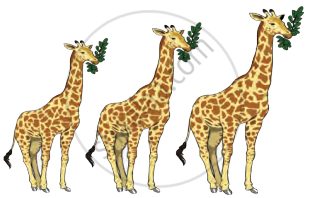Advertisements
Advertisements
Question
Mention the two principles through which Lamarck explained his ideas.
Solution
- Use and disuse: Parts of the body that are extensively used become larger and stronger, while those that are not used deteriorate. He explained this by taking the example of a giraffe. Lamarck suggested that the giraffe evolved from ground-feeding herbivores. But at a later stage, the area fell short of its ground-level vegetation, and thus, the giraffe took to feeding from trees. The constant stretching of its neck and forelimbs over many generations resulted in these structures becoming longer and stronger so as to reach higher foliage (leaves).
- Inheritance of acquired characters: It stated that an organism could pass its modifications to its offspring. Lamarck postulated that the long, muscular neck and forelimbs of the living giraffe were passed on to them by their ancestors, and the same characters would continue to appear generation after generation.
APPEARS IN
RELATED QUESTIONS
Write short notes based upon the information known to you.
Lamarckism
The first scientist who proposed his theory for evolution was ______.
Given alongside are two figures (A and B) showing a phenomenon that was first observed in Manchester before and after the year 1850.

Answer the following:
Briefly mention why the changes shown in the two figures appeared.
Theory of evolution : Darwin : : ____________ : Lamarck
What is inheritance of acquired characters?
Explain Lamarck’s Principle.
Observe the picture and answer the following questions.

- The given picture indicates which principle?
- Explain that principle in your language.
- What is the meaning of acquired characteristics?
The use and disuse theory of organs’ was postulated by Charles Darwin.
Observe the following figure and explain the concept.

Observe the figure given below and answer the questions that follow:

- What is the figure depicting?
- What was the reason that the giraffe stretched their neck and forelimbs?
- What is the name of the theory that is being depicted in the figure?
- Who explained the theory?
- What is the conclusion of this theory?
